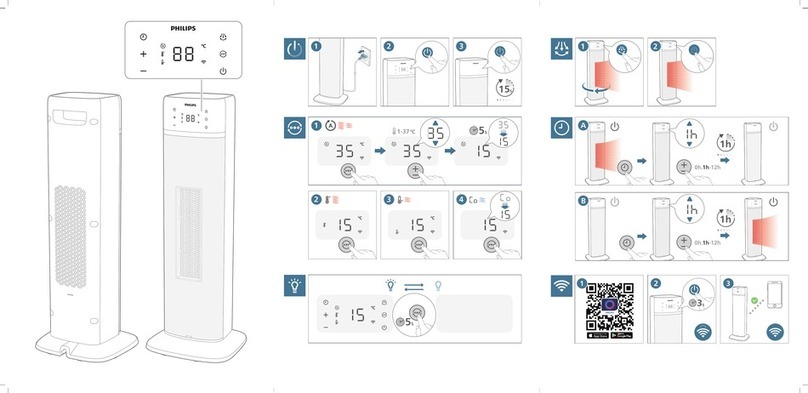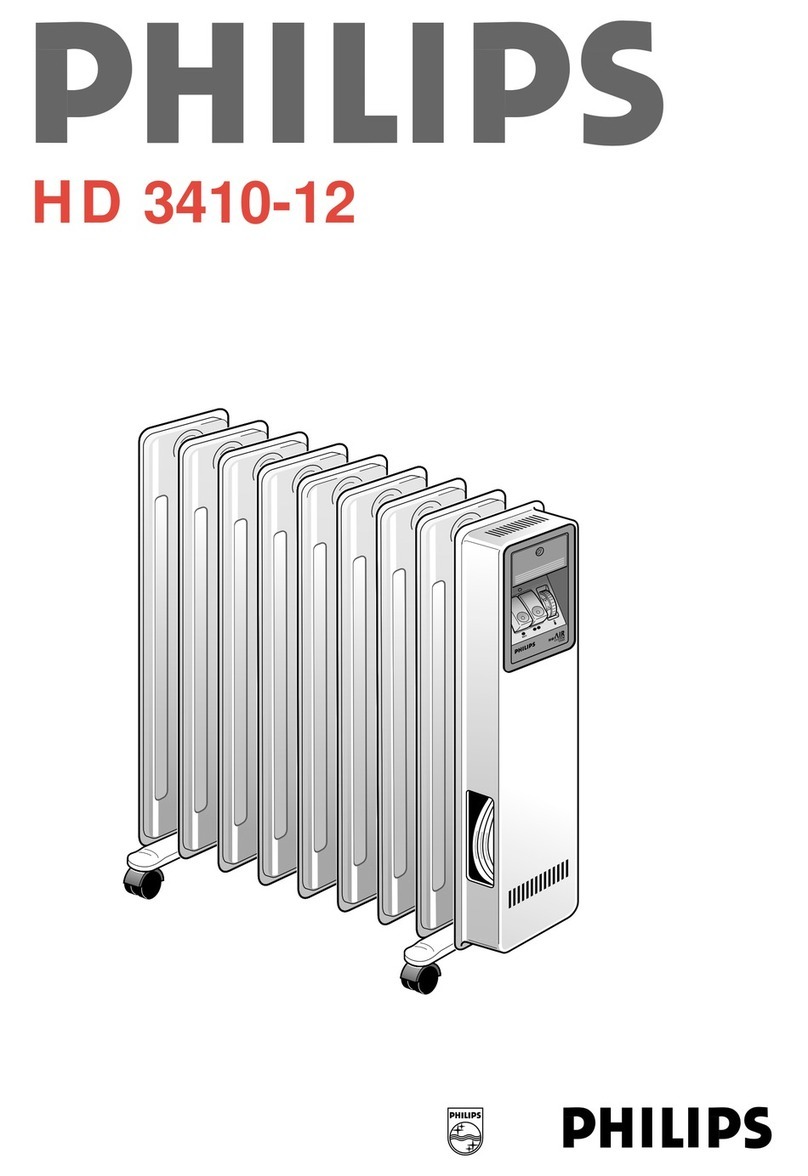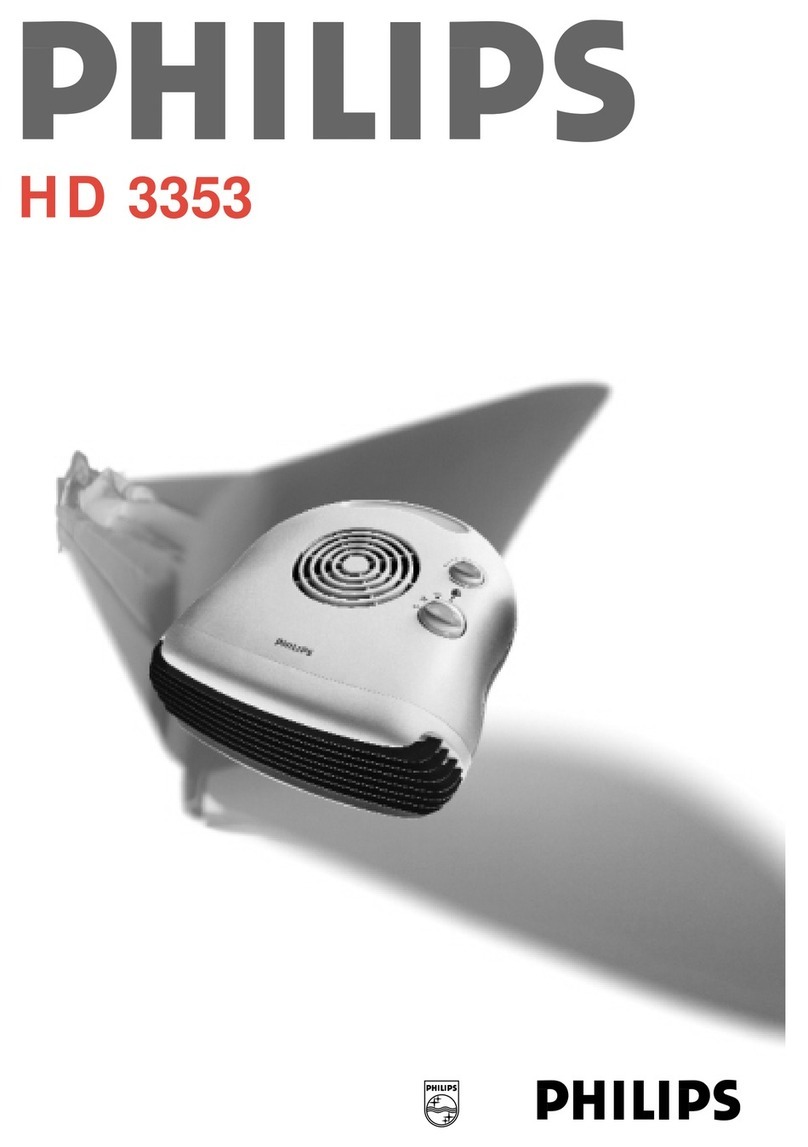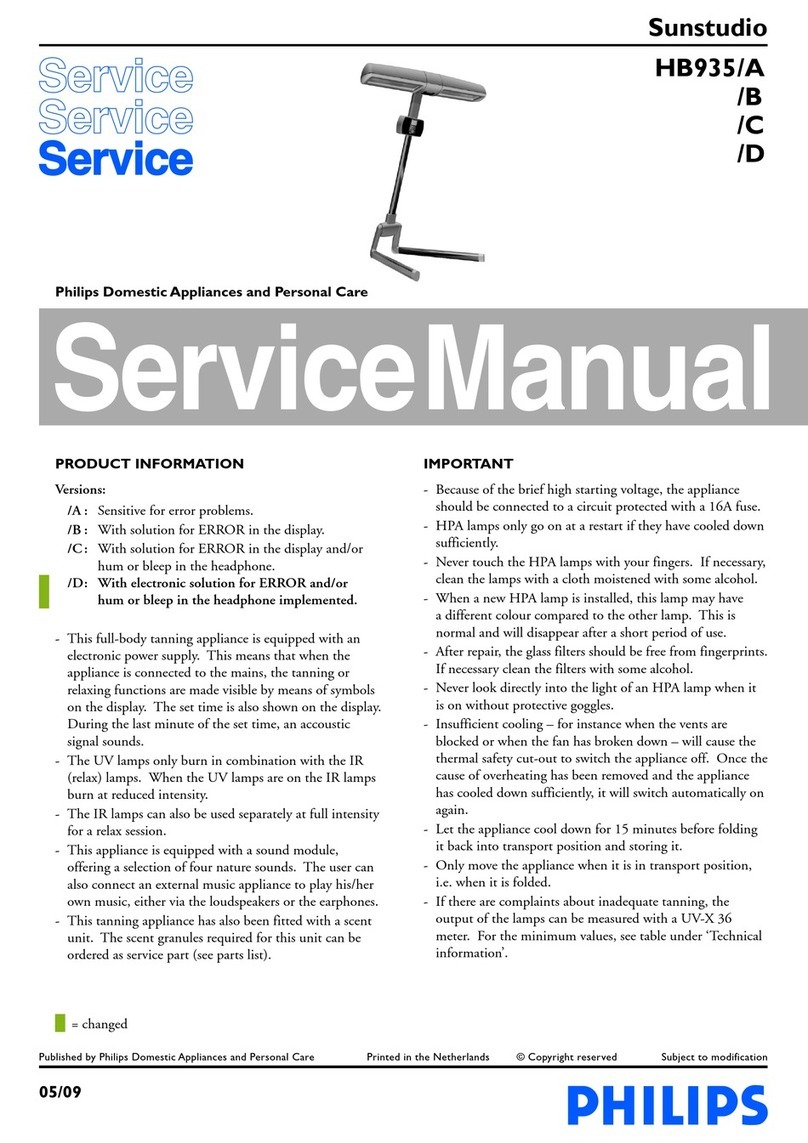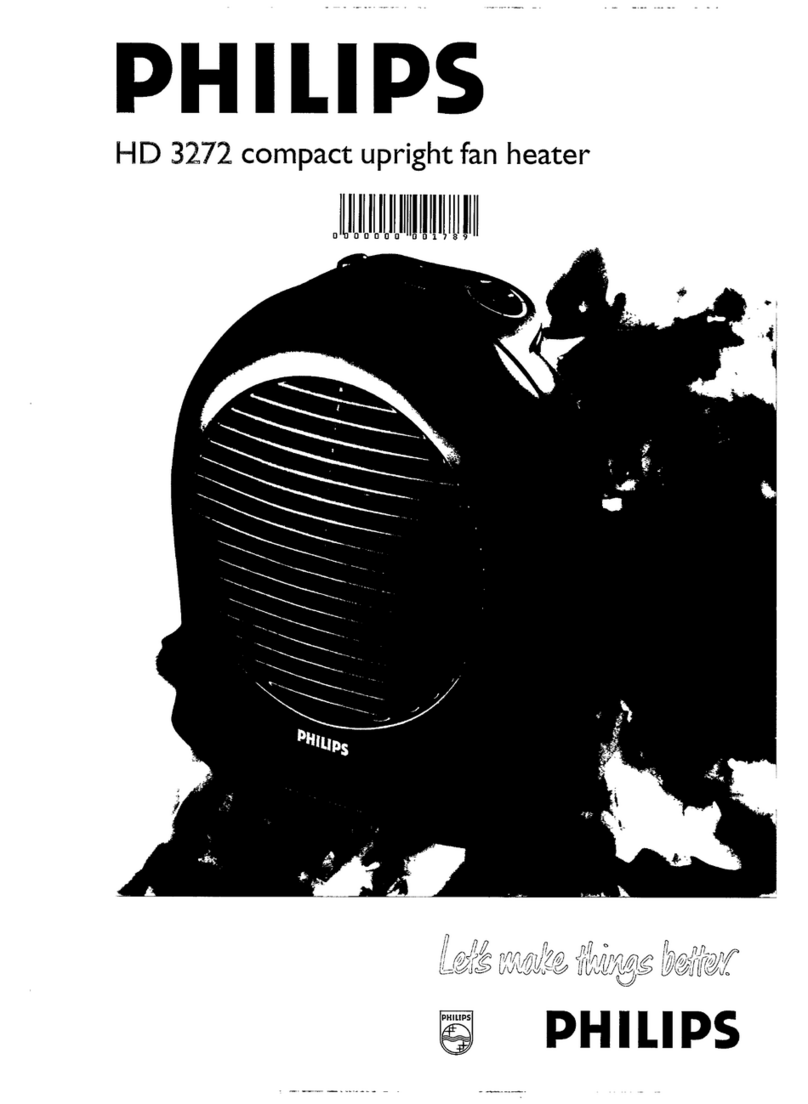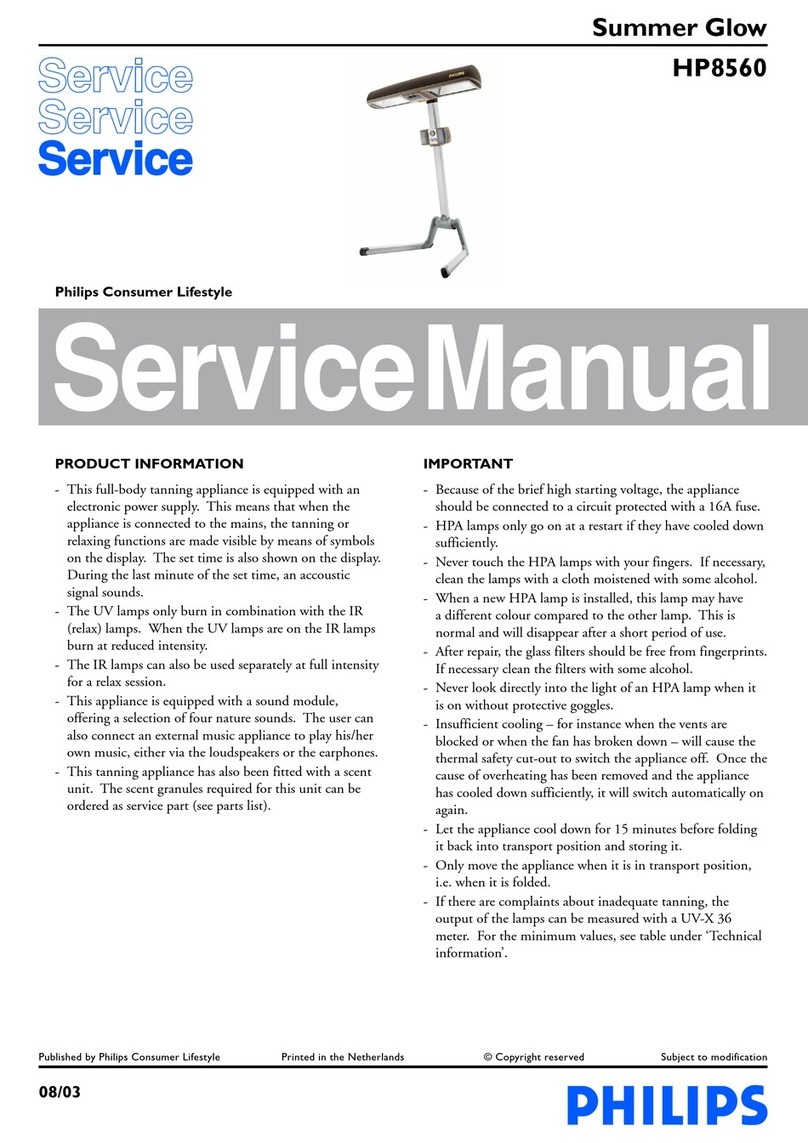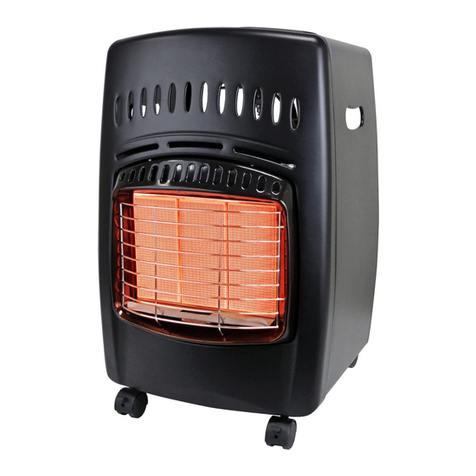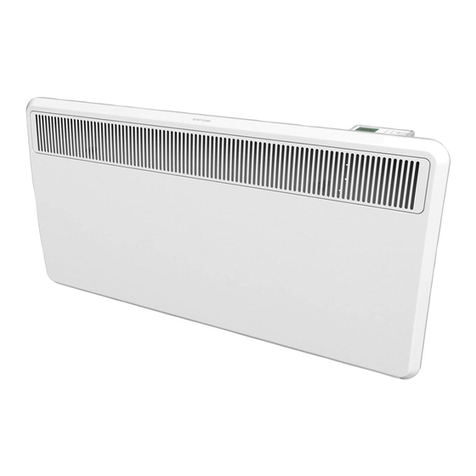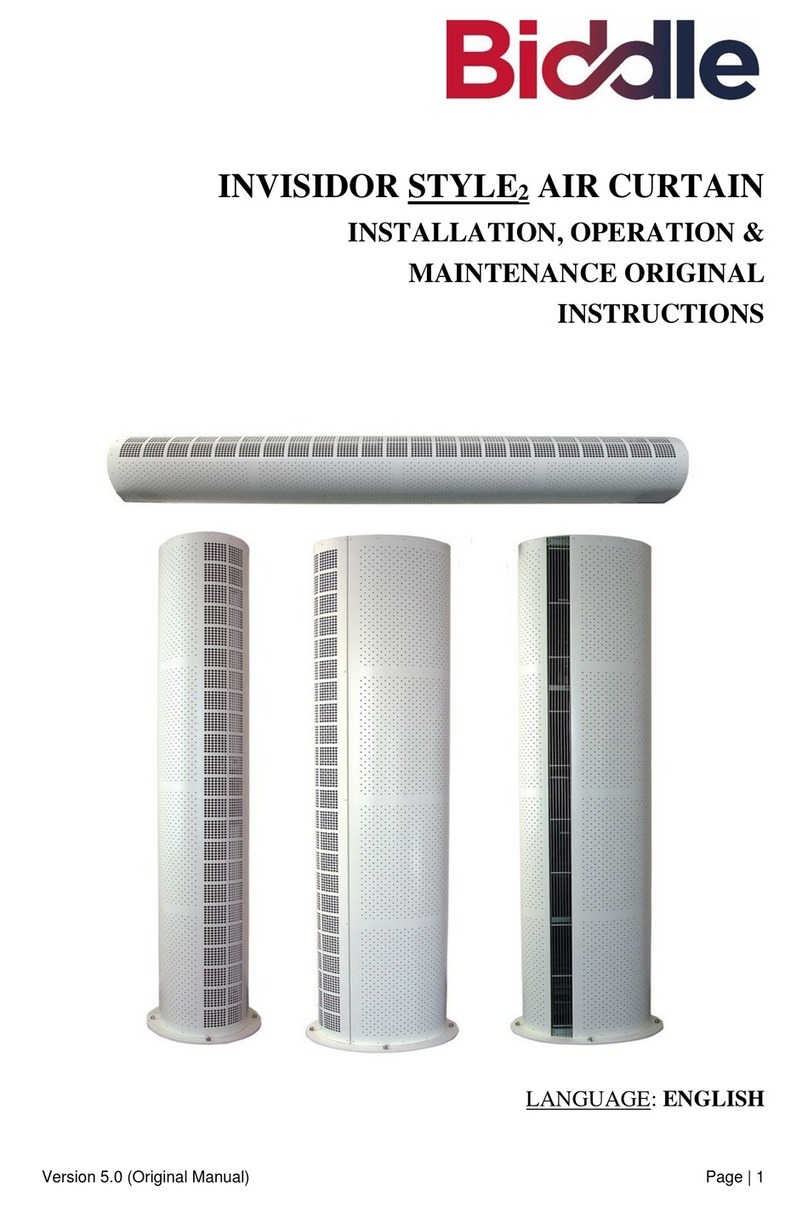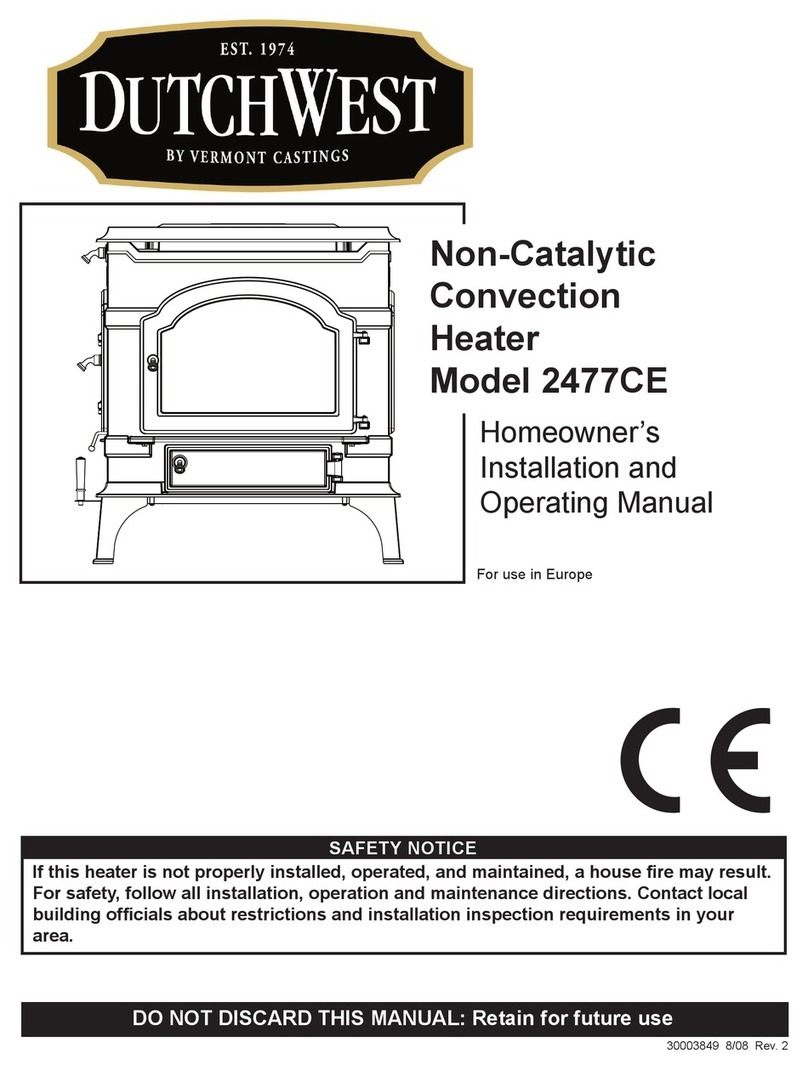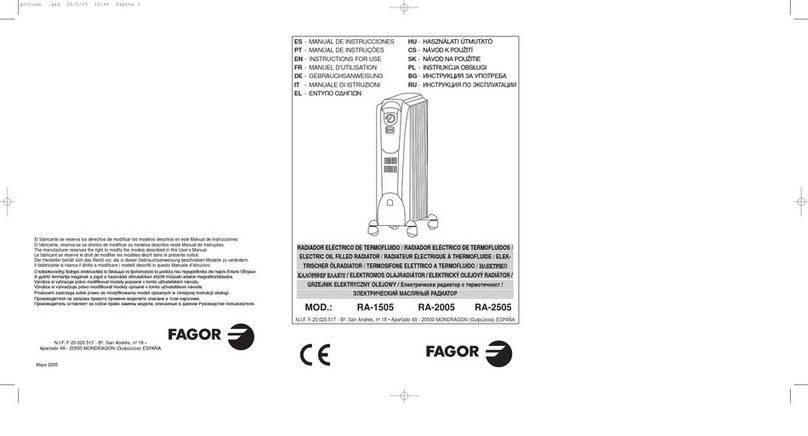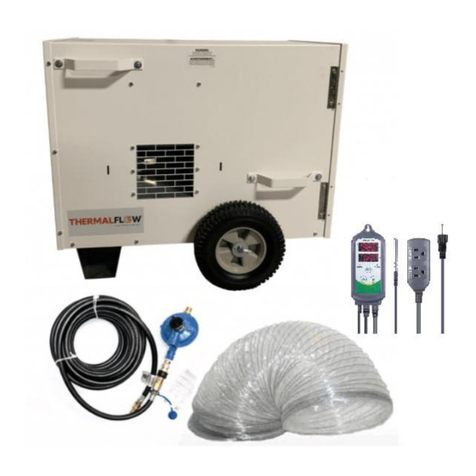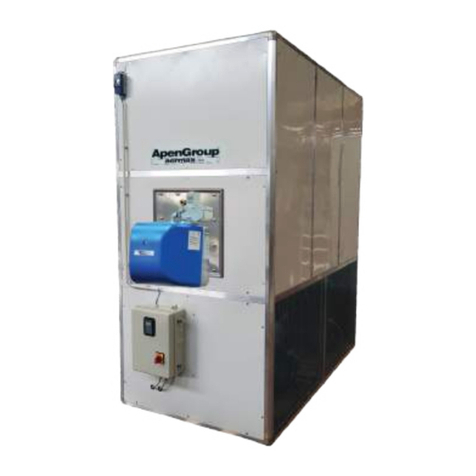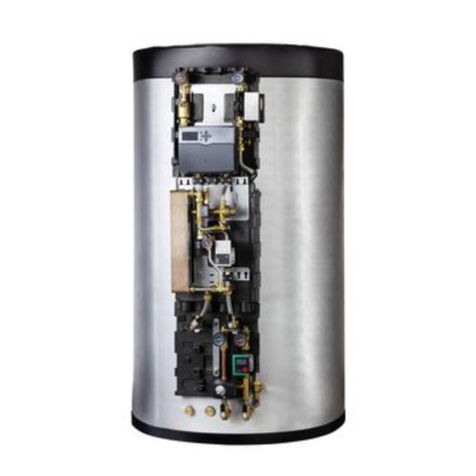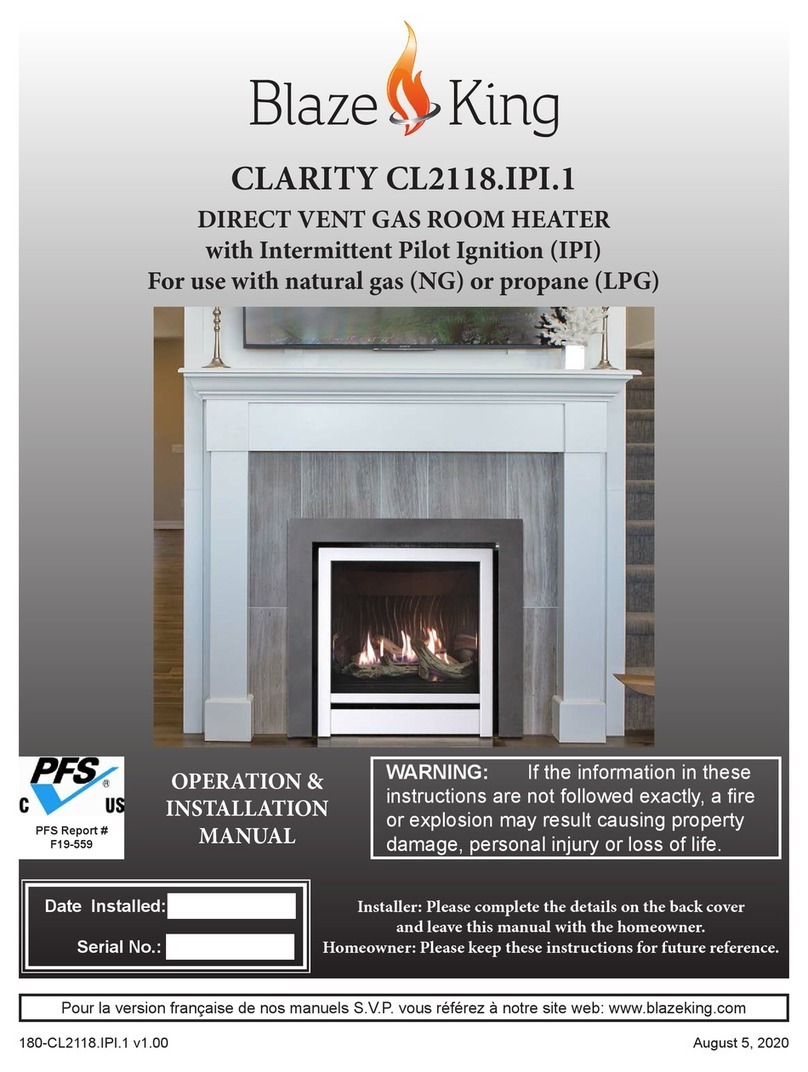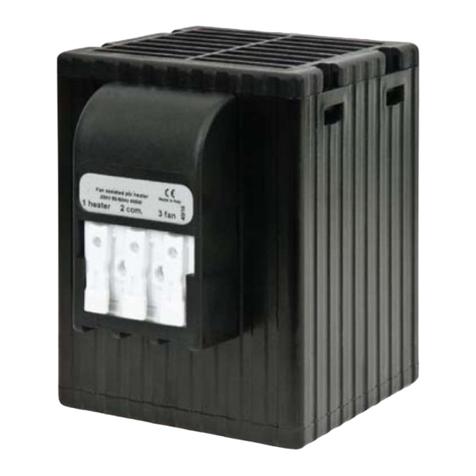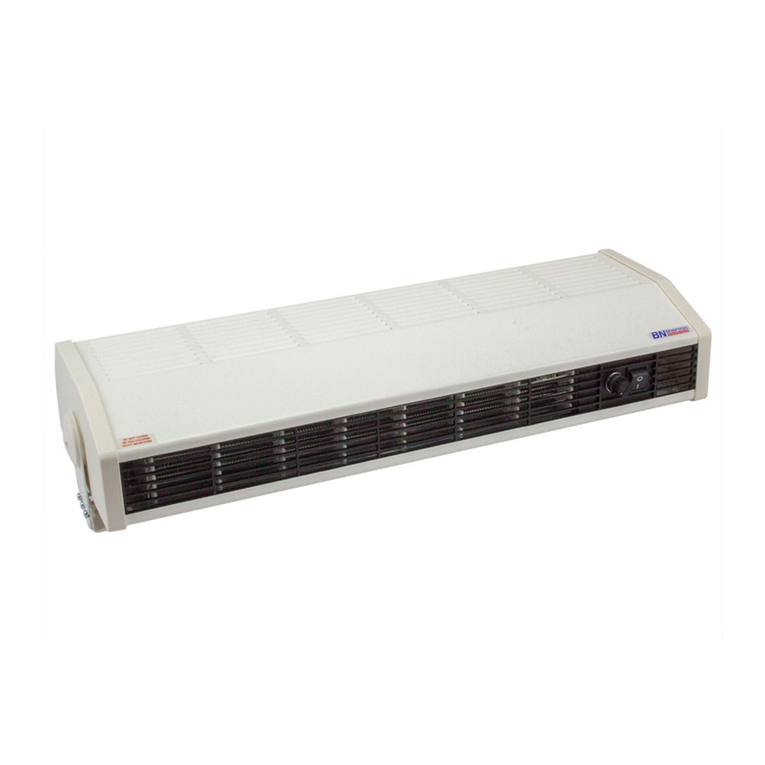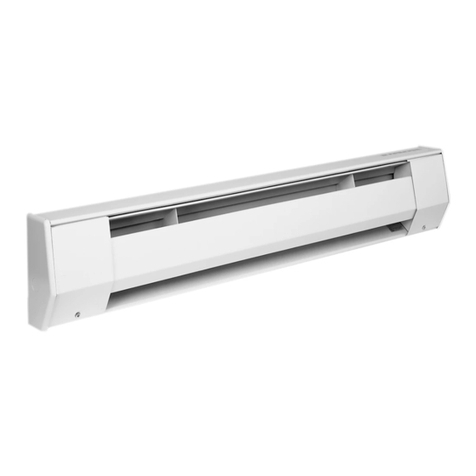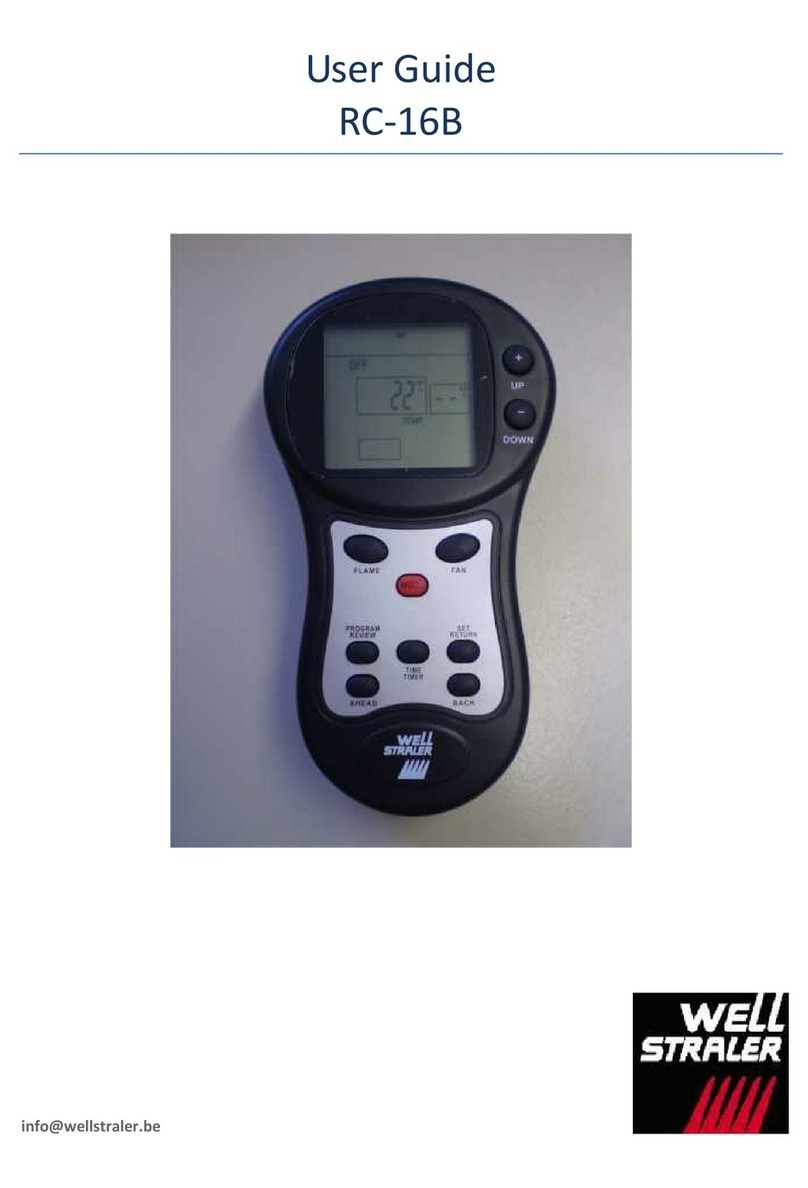die Kontrollampe.
- Die Kontrollampe leuchtet, bis das Gerät
ausgeschaltet oder der Strom unterbrochen
wird.
- Die Kontrollampe leuchtet auch, wenn der
Thermostat das Gerät ausgeschaltet hat. Sie
zeigt an, daß das Gerät am Netz und
betriebsbereit ist.
Frostschutz-Einstellung y
Das Gerät kann als Frostschutz verwendet
werden. Wenn Sie z.B. dafür sorgen wollen, daß
eine Wasserleitung nicht einfriert ...
- stellen Sie den Heizlüfter in die Nähe der Stelle,
die Sie frostfrei halten wollen;
- schalten Sie das Gerät ein;
- stellen Sie den Thermostatregler (G) auf die
niedrigste Position y, das sind ca. +5° C.
Das Gerät wird automatisch ausgeschaltet.
Auf dieser Stellung schaltet sich das Gerät ein,
wenn die Umgebungstemperatur unter +5° C
sinkt.
Der Überhitzungsschutz
Um Risiken und Schäden zu vermeiden, die durch
zu starke Erhitzung entstehen, schaltet der
Überhitzungsschutz das Gerät aus, sobald die
Heizelemente sich zu stark erhitzen.
Sollte dies geschehen, so verfahren Sie wie folgt:
-(Nur Typen HD 3346 und HD 3348:)
Vergewissern Sie sich zunächst, ob nicht der
Thermostat das Gerät ausgeschaltet hat.
Stellen Sie dazu den Thermostaten (G) auf die
höchste Position. Wird das Gerät dann nicht
eingeschaltet, hat tatsächlich der
Überhitzungsschutz das Gerät ausgeschaltet.
- Ziehen Sie den Netzstecker aus der Steckdose.
- Lassen Sie das Gerät 10 Minuten abkühlen.
- Prüfen Sie, ob der Heizlüfter vorschriftsmäßig
aufgestellt ist.
- Prüfen Sie weiter, ob die Luft durch die
Lufteinlaß- und Luftauslaßöffnungen zirkulieren
kann. Reinigen Sie bei Bedarf die Lufteinlaß-
und -auslaßöffnungen mit einem Staubsauger.
- Stecken Sie den Netzstecker wieder in die
Steckdose und schalten Sie das Gerät wieder
ein.
Wird das Gerät daraufhin erneut ausgeschaltet,
so ...
- ziehen Sie den Netzstecker aus der Steckdose
und
- lassen Sie das Gerät von Ihrem Philips-Händler
oder vom Philips Service Centre in Ihrem Lande
überprüfen.
• Wählen Sie einen sicheren Ort, an dem ein
elektrischer Schlag und Feuergefahr
ausgeschlossen werden können. Berühren Sie
das Gerät nie mit nassen oder feuchten
Händen.
• Berühren Sie das Gerät nicht mit feuchten oder
nassen Händen.
• Lassen Sie rund um das Gerät ausreichend
Platz.
Das Gerät ein- und ausschalten
Mit dem Geräteschalter (D) können Sie die
folgenden Funktionen einstellen:
O= Aus. Der Ventilator und die beiden
Heizelemente werden ausgeschaltet.
“= "Flüsterwind" (Nur Type HD 3348)
In dieser Position arbeitet das Gerät fast
lautlos. Trotzdem wird soviel Wärme
abgegeben, daß sich eine Person in der Nähe
des Geräts behaglich fühlt.
1= "Warmluft" zum allmählichen Erwärmen. Der
Ventilator und eines der beiden Heizelement
werden eingeschaltet.
2= "Heißluft" zum schnellen Aufheizen. Der
Ventilator und beide Heizelemente werden
eingeschaltet.
Thermostatische Temperaturregelung
(Nur Typen HD 3346 und HD 3348)
Ihr Heizlüfter ist mit einem Temperaturregler (G)
versehen, der die Raumtemperatur über einen
Thermostaten aufrechterhält. Der Thermostat mißt
die Temperatur und schaltet die Heizelemente
ein, wenn die Temperatur zu sinken beginnt, und
schaltet sie wieder aus, wenn die eingestellte
Temperatur erreicht ist.
So stellen Sie die gewünschte Temperatur ein:
- Schalten Sie das Gerät ein.
- Drehen Sie den Temperaturregler (G) im
Uhrzeigersinn auf die höchste Position.
- Ist die gewünschte Temperatur erreicht, drehen
Sie den Temperaturregler langsam entgegen
dem Uhrzeigersinn, bis das Gerät
ausgeschaltet wird.
- Das Gerät wird von jetzt an immer dann
eingeschaltet, wenn die Temperatur unter den
eingestellten Wert sinkt.
Der Temperaturregler kann bei eingeschaltetem
Gerät verstellt werden.
Die Kontrollampe
- Wenn das Gerät an das Stromnetz
angeschlossen und eingeschaltet ist, leuchtet
10
